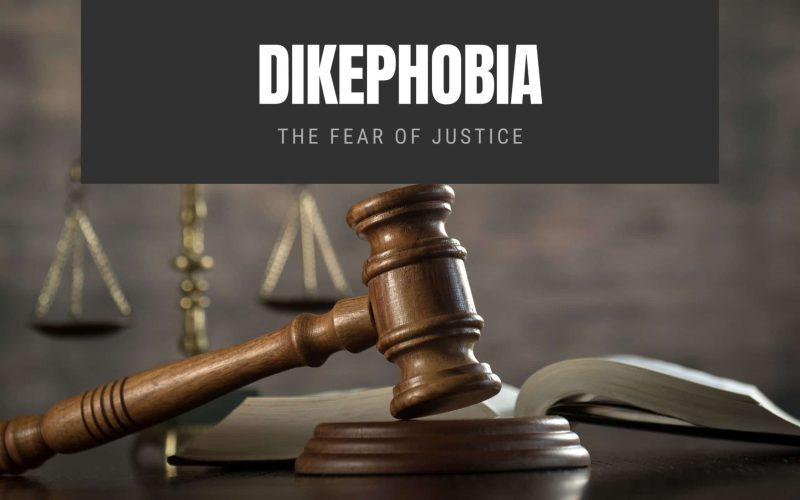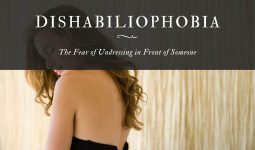Dikephobia (fear of justice) people who are suffering from this mental disorder have been known to avoid breaking the laws or rules.
It originates from the Greek word “Dik,” meaning justice, and “Phobia,” meaning fear.
Dikephobia is an irrational fear of justice.
People who suffer from this disorder would find the mere thought of justice to have an impact in the current state of mind if they were to be faced with an issue that is related to crime, or justice, their phobia for justice might throw them into a full-blown panic attack.
This is not always the same for all who suffer from this disorder; it is likely to occur.
Dikephobia patient can expect to have panic attacks, increased heart rate, increase in the rate of their breathing, higher blood pressure, muscle tension, trembling, and excessive sweat, among many other things.
Panic attacks might not always be the case for everyone suffering from Dikephobia, though it is known to occur, especially if the case is a severe one.
Dikephobia patient usually does all they can to avoid all justice-related places, topics, or I general anything that has to do with justice.
For example, someone who has Dikephobia may avoid courts, no matter how important the case might be, they would avoid going there or anywhere close to the court.
Symptoms of Dikephobia
Virtually all phobias have similar or the same symptoms; Dikephobia is also one of those mental disorders that share the same traits with other phobias. One of the symptoms is anxiety; this might be extreme, depending on the severity of the patient.
Their anxiety might be so high that it would lead to them having a full-blown panic attack, just like was mentioned earlier. This is one of the very prominent symptoms.
Some of the symptoms that are experienced by people who have Dikephobia include
- Extreme anxiety while thinking of justice
- Intense anxiety while anywhere near a courtroom or police station
- Unable to cope with their anxiety
- Muscle tension, shakiness, and extreme sweating from just thinking about it
- In most cases, it might lead to a panic attack.
- Rapid breathing
- Irregular heartbeat
- Dry mouth
- Inability to articulate words
- Feeling faint
- Pain or tightness in the chest
- Choking sensation
- Nausea
- The rise in the blood level
- Hyperventilation
- Confusion or disorientation
- Numbness
Causes of Dikephobia
It is not yet known, and there is no proper documentation as to what the causes of Dikephobia are, but professionals have linked it to genetic and environmental factors.
Usually, this plays a significant role in shaping how an individual thinks and is affected by various factors.
So, we believe that if we study these two factors, we might uncover some interesting facts about Dikephobia.
Treatment of Dikephobia
Treating Dikephobia and other forms of mental disorders is not always easy cause there hasn’t been a specific treatment or a guaranteed procedure. Still, some are worth mentioning.
Exposure Therapy
Exposure therapy is a popular way of treating various forms of phobia. Exposure therapy’s procedure is quite adequate, as people who have Dikephobia are gradually faced with scenarios related to justice.
But before they are exposed to justice or other justice-related issues, they would first be made aware or be made to imagine themselves in a courtroom.
Many mental disorder professionals adopt this mode of treatment to help treat phobias and anxiety.
In treating Dikephobia, the Doctor might use some mediums like pictures of various courtrooms; after some time, he might also have to introduce said patients to videos of people in a courtroom hearing.
This method is proposed to help people who have Dikephobia get over their fear of justice, as the more they get exposed to what they are afraid of, the less scared they would be.
Cognitive Behavioral Therapy CBT
Like exposure therapy, CBT is a conventional treatment for various disorders, including Dikephobia, which most times works for generalized anxiety disorder (GAD) or obsessive-compulsive disorder (OCD).
Aside from these disorders, CBT is also said to be an excellent treatment for Dikephobia. CBT is generally a way for the therapist to help the patient uncover why he or she feels and acts the way they do regarding a particular fear.
If they could understand why they think the way they do about justice, courtrooms, and police stations, then they might be able to find a pragmatic approach when faced with their fears.
Dialectical Behavior Therapy
Another form of treatment for Dikephobia is DBT; usually, it’s a treatment that’s meant for people with emotional changes, i.e., used to treat people who have a borderline personality disorder.
But still, it has been seen as a great way of treating Dikephobia, due to the way the sessions are dome, the patients usually, learn a lot of coping skills from DBT group therapy.
This treatment can last from five months to six months and can have from two to several people; it all depends on how many join the group.
Exercise for Dikephobia
Exercise is known to be extremely beneficial for people who have a various mental disorder, including Dikephobia; cardiovascular exercise is one of the most effective exercises that is known to relieve stress.
Aerobic exercises have been said to help people, and they are more effective at releasing some of the feel-good chemicals in the brain, namely endorphins.
Since stress had been seen as a major course of anxiety, the doctor has advised that regular exercise would yield a good result for Dikephobia.








